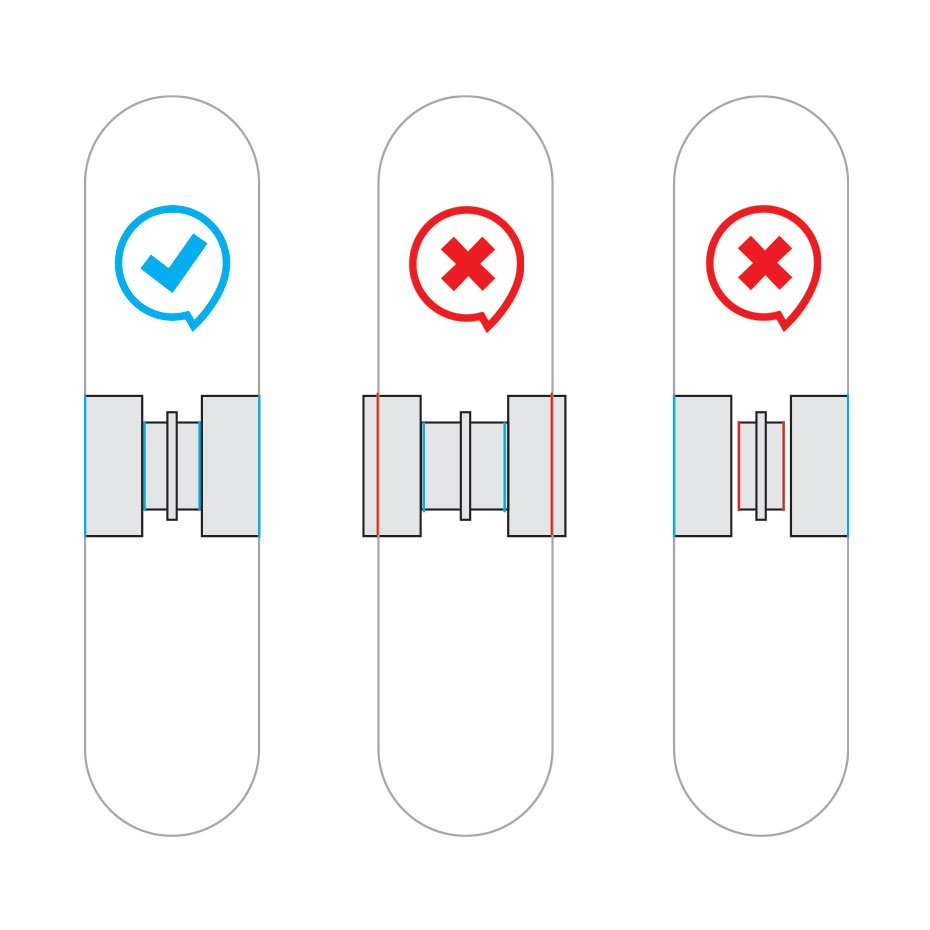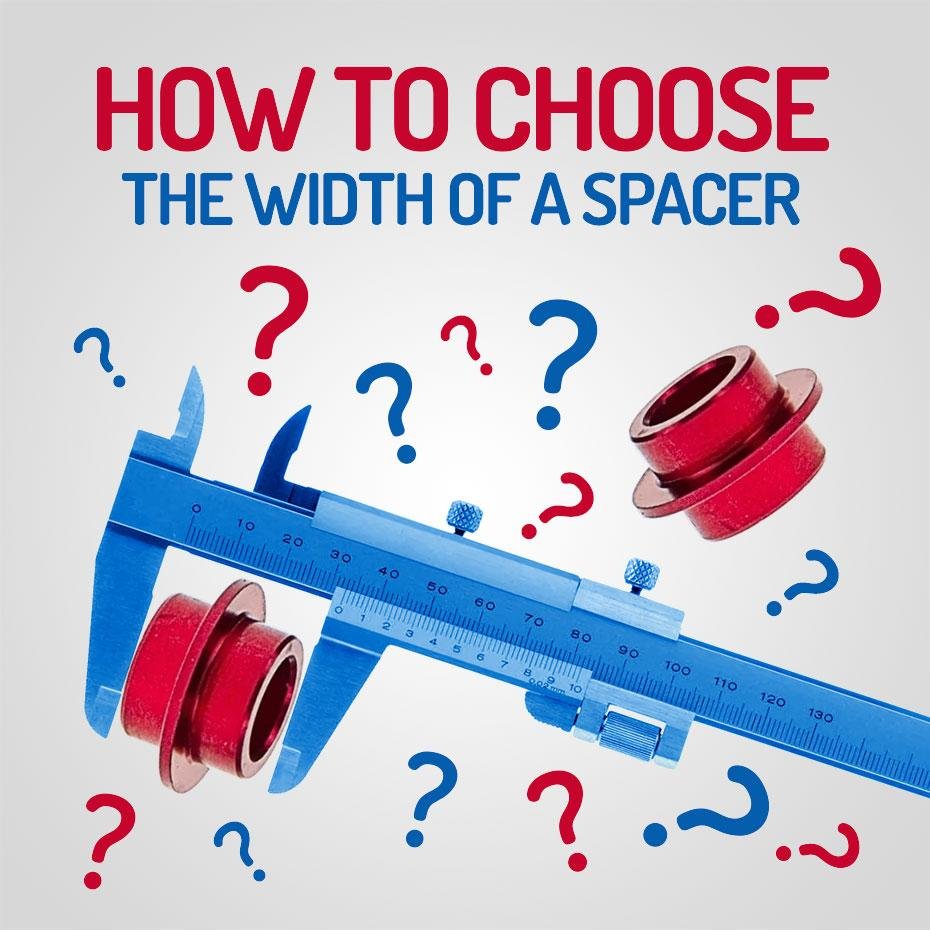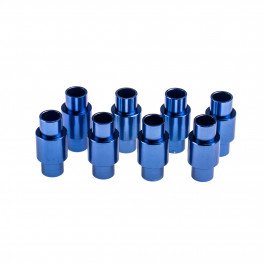Correctly chosen spacer width in inline skate wheels guarantees the best rolling.
Spacers (also called distance pieces) are an essential element of every pair of skates. Properly matching their width to the wheels:
- improves the speed of their rotation,
- increases the lifespan of the core,
- allows for the maximum tightening of the screws fixing the wheels in the frame, which increases safety during riding.
Spacers are placed in the wheel between two bearings and provide the proper distance between them after the wheels are fully tightened in the frame.
When selecting the size of the spacer for the wheel, we may encounter three different scenarios:

The correct width of the spacer:
- A well-chosen spacer, placed between the bearings in the wheel, perfectly touches the inner rings of the bearings, and when the wheels are maximally tightened in the frame, they rotate freely without any noticeable resistance. The bearings placed in the wheel do not protrude beyond the plastic or metal core of the wheel.
Incorrect spacer width:
- A spacer that is too narrow (or its absence) causes the spacer to minimally or almost not touch the inner rings of the bearings at all, and when the screws fixing the wheels in the frame are maximally tightened, it does not provide the proper distance between them. Wheels with spacers that are too narrow rotate very poorly (or not at all) and quickly decelerate. Slightly loosening the screws fixing the wheels can increase their rotation speed - such a procedure is very dangerous and may result in losing a wheel during skating, which increases the risk of an accident!
- Spacers that are too wide prevent the proper pressing and positioning of bearings in the core of the wheel. Installing wheels with a spacer that is too wide into the frame can lead to damage by expanding the side walls. If such a set is successfully mounted in the frame, characteristic clicking sounds may occur during skating, similar to those when pressing bearings into the core of the wheel. This is caused by the bearings moving back and forth in the core, depending on which edge of the skate the body weight is currently supported on. Skating on wheels with spacers that are too wide leads to rapid damage to both the bearings and the core of the wheels, which also significantly reduces our safety!
How to choose the right size spacers for inline skate wheels?
1. The easiest way is to purchase dedicated spacers of a specified width.
Precision spacers are available on the market, which, whether you buy a ready-made set or individual pieces, always have the same width specified to the second decimal place.
If the manufacturer of the wheels, to which the spacer will be installed, indicates what size spacer fits perfectly with that model, the matter is clear. However, if we do not have such information, we must move on to the second method.
2. Determining the optimal spacer width.
Unfortunately, in most cases, wheel manufacturers do not provide the optimal width of spacers for their wheel models. However, you can check this yourself by:
- measuring the width of old, well-fitted spacers, if the replacement is within the same wheel model and you have an old specimen,
- using the "trial and error" method, i.e., mounting spacers of various widths (e.g., different spacers from a set of "non-precision" spacers) and then measuring the one that was optimally fitted.
Width measurements are best made with a caliper accurate to the second decimal place. After determining the optimal spacer width for our wheels, you should buy a set of the appropriate width.
Other issues when choosing the right spacers:
- Wheels of poor quality from unknown brands in the inline skating market may show variations in core width even within the same set and model - one width of precision spacers may not fulfill its role.
- Different bearing sizes - often, despite the standard bearing size of 608, low-quality bearings and bearings not typically intended for inline skating may have slightly different dimensions, which, combined with a given wheel model, makes it difficult to select the appropriate spacers. In this case, even dedicated spacers of the width specified by the wheel manufacturer may not fit as they should.
- Sets of "non-precision" spacers - spacer sets available on the market often do not have a strictly specified width, meaning each one can slightly differ in size. Such a difference can mean that one spacer works perfectly in one wheel, while another from the same set does not match with the same wheel. This issue also applies to complete, new skates, where the wheels may spin unevenly. This may be partly due to bearings that have not yet "broken in," but also due to the use of spacers with inconsistent dimensions, which may be slightly too narrow or too wide for individual wheels.
In summary:
- Spacers are essential for properly tightened wheels in inline skates to spin correctly.
- Spacers that come standard in skates may not have perfectly matched dimensions and cause wheels to spin slowly.
- Only precision spacers (or those with adjustable width), perfectly matched to a given set of bearings and wheels, will ensure optimal spinning of the wheels mounted in the skates.
























